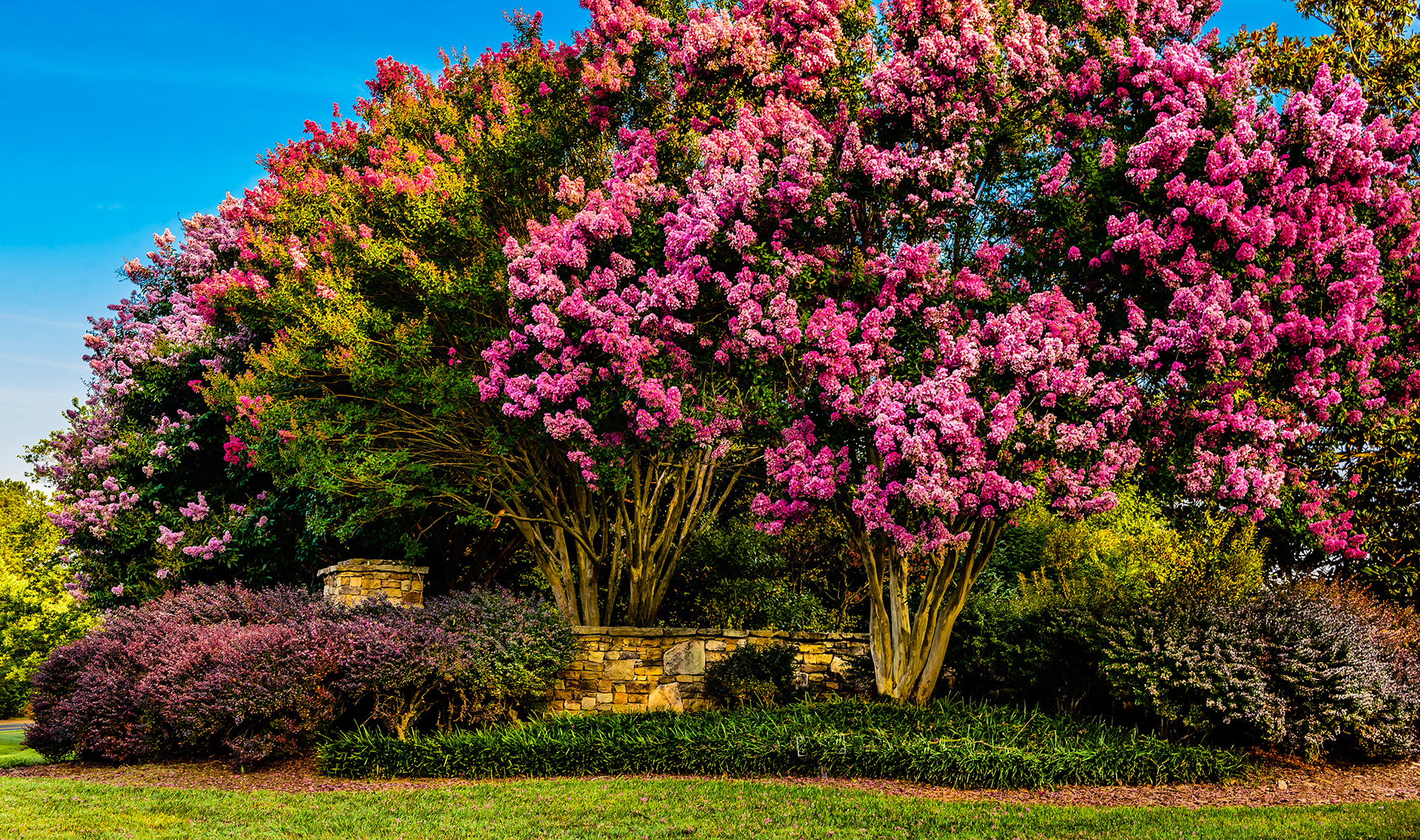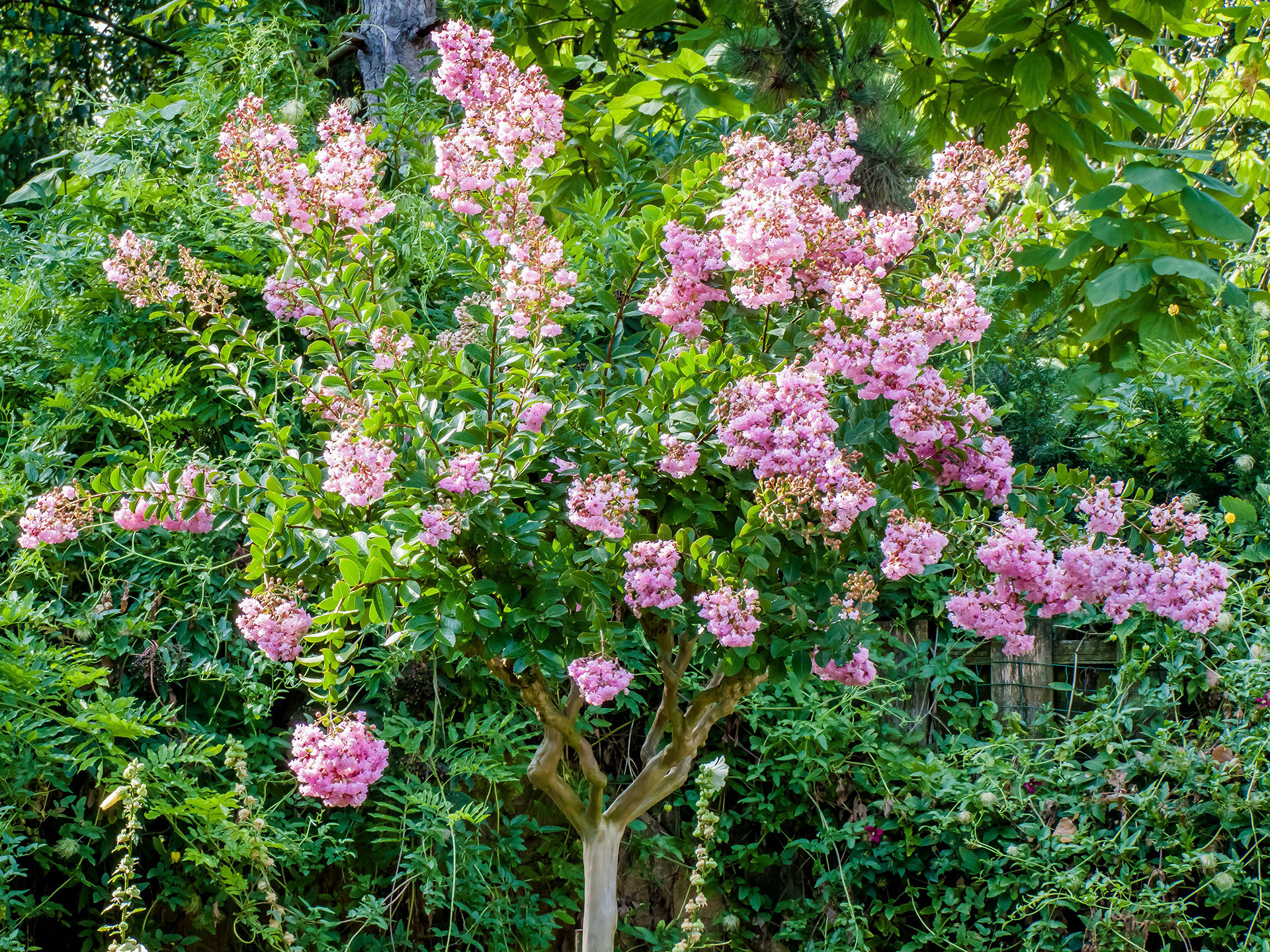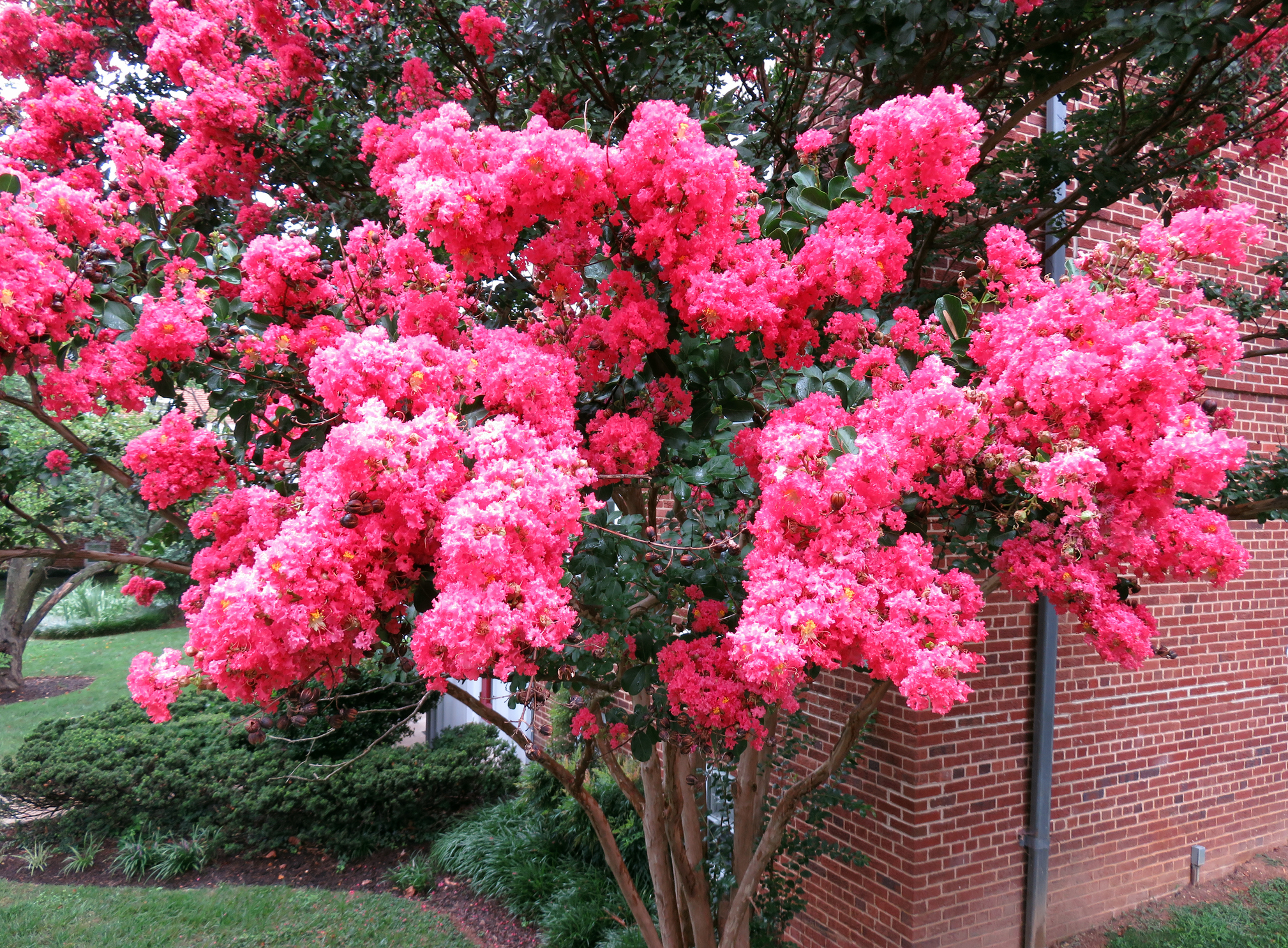Crepe myrtle not blooming? Here's why
Seven reasons that explain a crepe myrtle not blooming – and how to fix it


Are you asking yourself, 'why is my crepe myrtle not blooming?' Then you need to check the key factors that could prevent it from flourishing.
Also known as Lagerstroemia, the crepe myrtle is a versatile plant that can be grown as a tree or maintained as an ornamental shrub, making it a beautiful addition to your garden.
It possesses panicles of beautiful flowers with a crepe-like texture, usually in pink, purple or white, which start in late spring and endure through summer.
‘The crepe myrtle is such a beautiful flowering tree during the warmer months,’ says Lindsey Hyland, founder of Urban Organic Yield. ‘They also have good fall color. I love how the branches are thick enough to handle being in containers, which also makes them one of the best trees to grow in pots.’
A crepe myrtle not blooming is a common problem – so use our seven-step guide to diagnose why your prized tree is failing to flower.
Why is my crepe myrtle not blooming?
Though crepe myrtles are fairly hardy, reliable plants, there are several issues that can prevent them from blooming.
‘First and foremost, you need to ensure that you are growing your crepe myrtle in the right climate,’ says Homes & Gardens editor in chief Lucy Searle.
‘Native to Southern Asia and Oceania, the crepe myrtle has transported well to other continents, and is widely grown in the US – the trees can be grown in USDA hardiness zones 6-10, though are best suited to zones 7-9.’
You also need to ensure that you know how to prune crepe myrtle.
As long as you are growing crepe myrtle in a suitable climate, then diagnosing why it is not blooming should be fairly simple.

1. Your tree is too young
Your crepe myrtle may not be blooming if it is only a young tree – it can take 3-5 years for a tree to become established enough to flower.
This may sound like a long time, but bear in mind that the trees take 5-10 years to mature, and 20-50 years to reach their ultimate size. ‘Crepe myrtles are a long-term investment in your garden, and will be enjoyed for decades to come,’ says Searle.
Bear in mind that trees bought from garden centers are usually already a few years old, so you shouldn’t have too long to wait.
2. Lack of sunlight
‘Crepe myrtles demand six hours of uninterrupted sunlight per day, so ensure your plant's location allows for this,’ says Tiffany Payne at Orangeries UK.
‘If other trees shadow your crepe myrtle, for example, it will not get the adequate exposure it requires and will not thrive as much as you would want.’
If your crepe myrtle is planted in a spot where it can’t receive enough sunlight, then you should consider moving it to a sunnier spot. The best time to do this is when the tree is dormant – ideally in late winter.
3. Crepe myrtle not getting enough water
Crepe myrtles benefit from being watered regularly when newly planted – usually for the first year – but once settled in they are quite drought tolerant.
However, in periods of extreme drought, the trees can become stressed and fail to bloom due to lack of water.
Look for signs of wilting and yellowing, which are an indication of underwatering.
‘Water your tree deeply once or twice a month in dry weather, so that the water reaches around 12-24 inches deep in the soil,’ says Searle.

4. Poorly draining soil
While crepe myrtles benefit from a good watering when they are young and in periods of dry weather, they must be planted in well draining soil, and do not like to be waterlogged.
The good news is that the trees are adaptable to most soil types, except for soggy soils that hold too much moisture.
5. Your tree isn’t getting the right nutrients
The right nutrient balance is important for all plants, and if your soil isn’t providing the right mix, then it could be a key reason for a crepe myrtle not blooming.
In order to thrive, these shrubs need phosphorus – so fertilizing crepe myrtle can help. Add a slow-release fertilizer to the soil surrounding the tree in early spring.
However, a common mistake gardeners make is to use a ferilizer high in nitrogen, which is likely to inhibit flowering. Consider not just the tree itself, but nearby plants in surrounding flower beds. Use a low-nitrogen fertilizer.
6. Pruning crepe myrtle incorrectly
Crepe myrtles only bloom on new growth, so take care not to remove this when pruning. One potential reason for lack of blooms could be down to bad choice of timing for when you prune your crepe myrtle.
‘A common explanation for crepe myrtle not blooming is because you pruned it too late,’ says Payne. ‘You should never clip it after it has begun to develop in the spring and once it blooms since you risk mistakenly removing new growth.
‘Instead, prune flowers either after they've finished flowering or very early in the spring before the blossoms appear.’
If you need to tidy up your tree, only remove older wood, rather than new growth.
Another reason older crepe myrtles may not be blooming is if the branches have become overcrowded. Make sure you remove dead branches, which will allow in more sunlight and help the air to circulate.
7. Your crepe myrtle is diseased
There are a few diseases which can affect crepe myrtles; while they should be easy to spot, they can impede growth and flowering.
Sooty mold, which appears as a black residue on the leaves, is a fungal problem caused by insects. The mold grows on the honeydew created by insects feasting on the plant’s sap. Common culprits include aphids, scale insects, mealybugs, and whiteflies.
Controlling the pests will take care of the issue – use an insecticidal soap or natural product such as neem oil.
Cercospora leaf spot is another common fungus, which is evident by brown spots appearing on older leaves. These will then prematurely drop, which puts stress on the plant, potentially impacting flowering. Thankfully, it doesn’t cause long-term damage to the tree.
The best way to avoid cercospora is to grow your tree in an open, sunny spot with good air circulation, which will make it harder for the fungus to take hold.
What do you put on crepe myrtles to make them bloom?
To make your crepe myrtle bloom, apply a high-phosphorus, low-nitrogen fertilizer in a slow-release formula in early spring. Alternatively, fertilize regularly throughout the growing season.
Younger trees need monthly feeding, while more established trees benefit from being fertilized every two weeks.
Design expertise in your inbox – from inspiring decorating ideas and beautiful celebrity homes to practical gardening advice and shopping round-ups.

Melanie has worked in homes and gardens media for two decades. Having previously served as Editor on Period Living magazine, and worked on Homes & Gardens, Gardening Etc, Real Homes, and Homebuilding & Renovating, she is now focusing on her passion for gardening as a Senior Editor at Gardening Know How. As a keen home grower, Melanie has experimented with pretty much every type of vegetable at some point – with mixed results. Often it is the simplest things that elude you, which may explain why she just can't seem to master zucchinis.